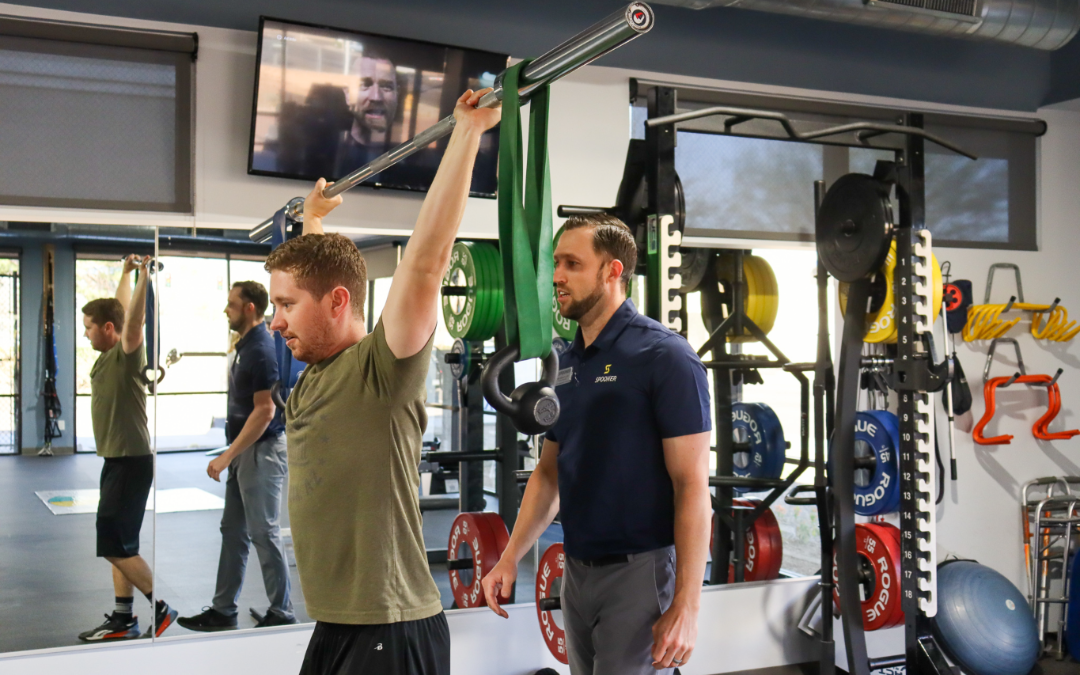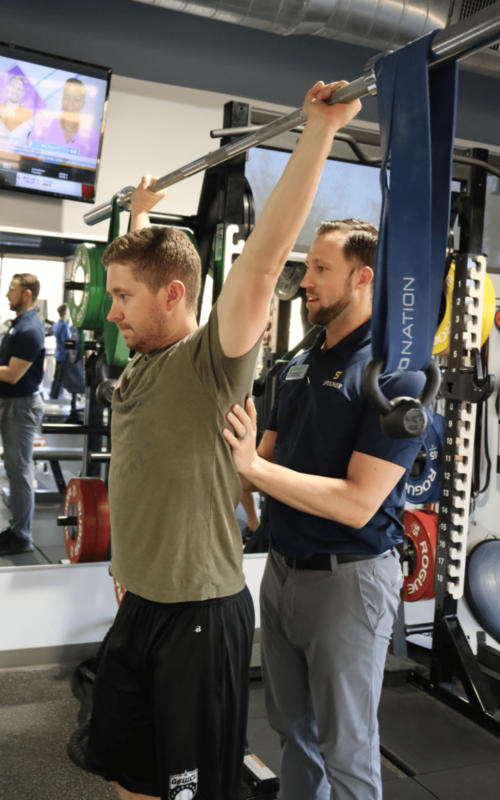By: Dillon Moeller, PT, DPT, FAFS
When you think about overhead strength, you might first think about the bigger upper body muscles like deltoids and lats. However, it is your small but mighty muscles that allow you to perform at the highest level. We talked to Dillon Moeller, PT, DPT, FAFS, about what he teaches baseball, softball, and CrossFit athletes who he works with on a daily basis.
Small but Mighty Muscles
When athletes come to me with overhead pain, or if they are struggling with the follow through of their throw, or an overhead CrossFit lift, the first thing I always observe is the positioning of their shoulder blades sitting on their rib cage. The majority of the athletes that I treat on a daily basis who come in with shoulder pain all demonstrate similar compensatory patterns with active range of motion. These compensations are much more prevalent with an increased load. The reason for this is the small supporting muscles – the serratus anterior and lower traps – aren’t performing their job correctly as primary scapular stabilizers when performing shoulder motions.
There are 18 muscles that attach to the shoulder blade, and every one of them plays a vital role in making sure they work properly at the right time. Oftentimes, those bigger muscles are being overused due to compensating for the smaller muscles, and that is the cause of pain for the athlete. The root, however, is their inability to recruit those higher functioning, small muscles.
Why Athletes Need to Activate These Muscles
For the student athlete: They may be sitting all day with a rounded posture, then be asked and required to throw a high-speed fastball at practice. They may not have the proper knowledge of how to engage their entire shoulder musculature in order to accept the high demands placed on the rotator cuff muscles. Their posterior muscles have been lengthened all day due to poor posture and haven’t been properly stimulated. Throwing can be a shock to the neuromuscular system of the shoulder complex, which increases the resistance on the rotator cuff muscles to decelerate, and, now, they have shoulder or elbow pain and/or decreased performance.
For the CrossFit athlete: They work all day in a similar position to the student athlete, and, because of this, they might not be able to perform an overhead lift correctly. They sit at a desk all day with poor posture and then go to the gym to perform overhead lifts, countless squats, and also swing some weights overhead without a proper warmup or active stretching routine. That poor posture can create a lot of tension and tightness in the upper traps and front shoulder muscles and also result in limited thoracic extension. Ultimately, the tension and poor mobility may be the symptom of pain, but the cause may be the smaller muscles and their inability to fire correctly during overhead lifts in the correct sequential order.
How Athletes Can Perform at a Higher Level
Now that we understand the potential underlying cause of their pain, it is time to get to work.
One of things I do to help these athletes is teach them how to activate these small but mighty muscles. The lower traps and the serratus anterior have to work together to keep the shoulder blade sitting on the rib cage.
Once the athlete is able to coordinate that activation on their own, we will begin to strengthen the muscles and determine how their shoulder blade moves with proper stability. We will see how much stronger they have become, or, when it comes to an overhead lift, how stable their shoulder can be in a variety of positions using different loading techniques. If the athlete needs to return to throwing, we will look at throwing mechanics, symptoms before and after and lastly, ensure they have proper biomechanics from the ground up. No matter what sport they are trying to return to, we want to make sure they no longer have pain with that activity.
Once athletes retrain and relearn the activation of the serratus anterior and the lower traps, they will be able to return to what they love to do without any limitations. It can be a quick fix but it requires the athlete to dedicate their time working on those small but mighty muscles, so they can perform at their highest level.
If you are an overhead athlete, and you are struggling to achieve your goals, schedule an appointment with a Spooner therapist today. We will help you activate these small but mighty muscles to help you perform better.


